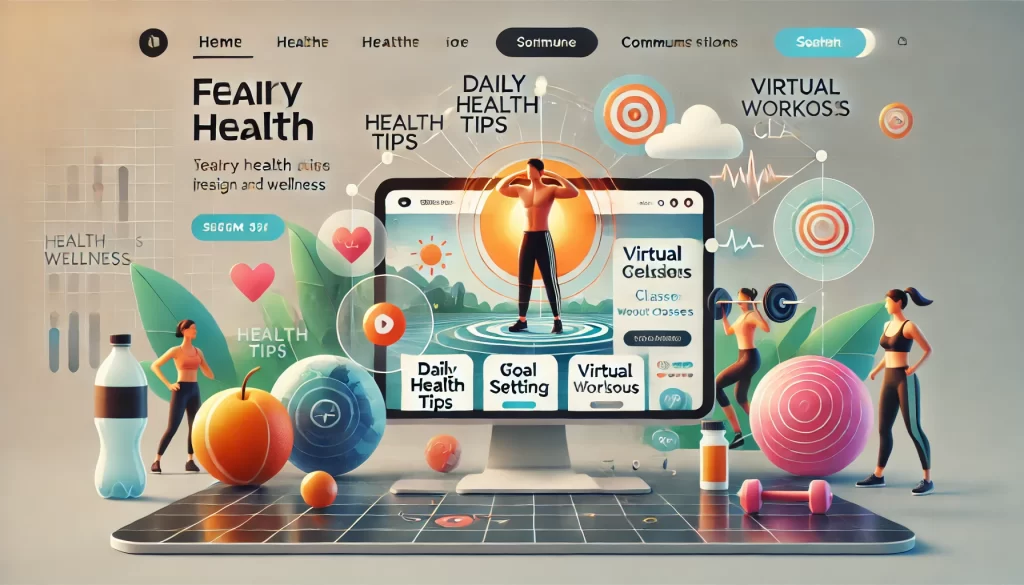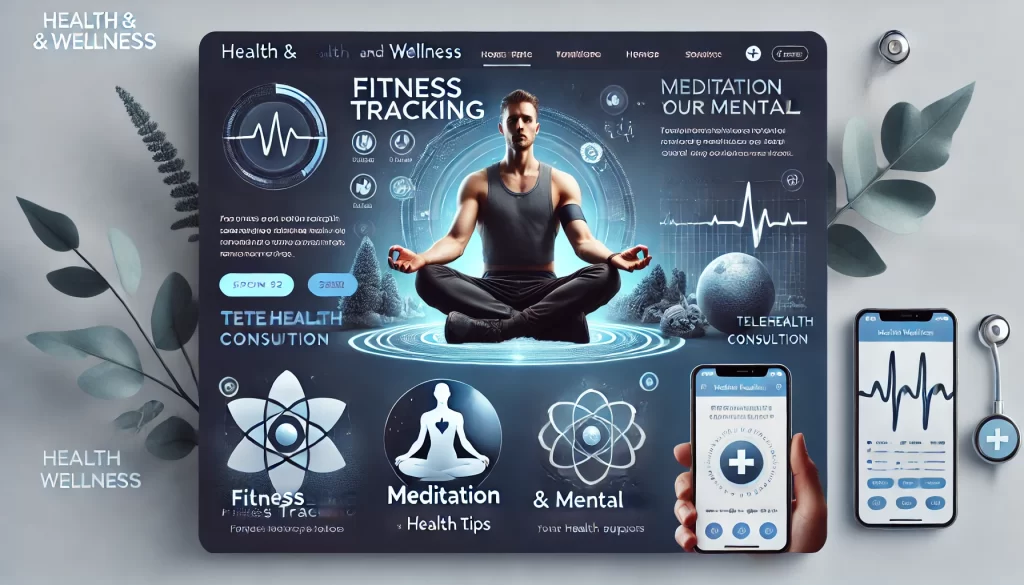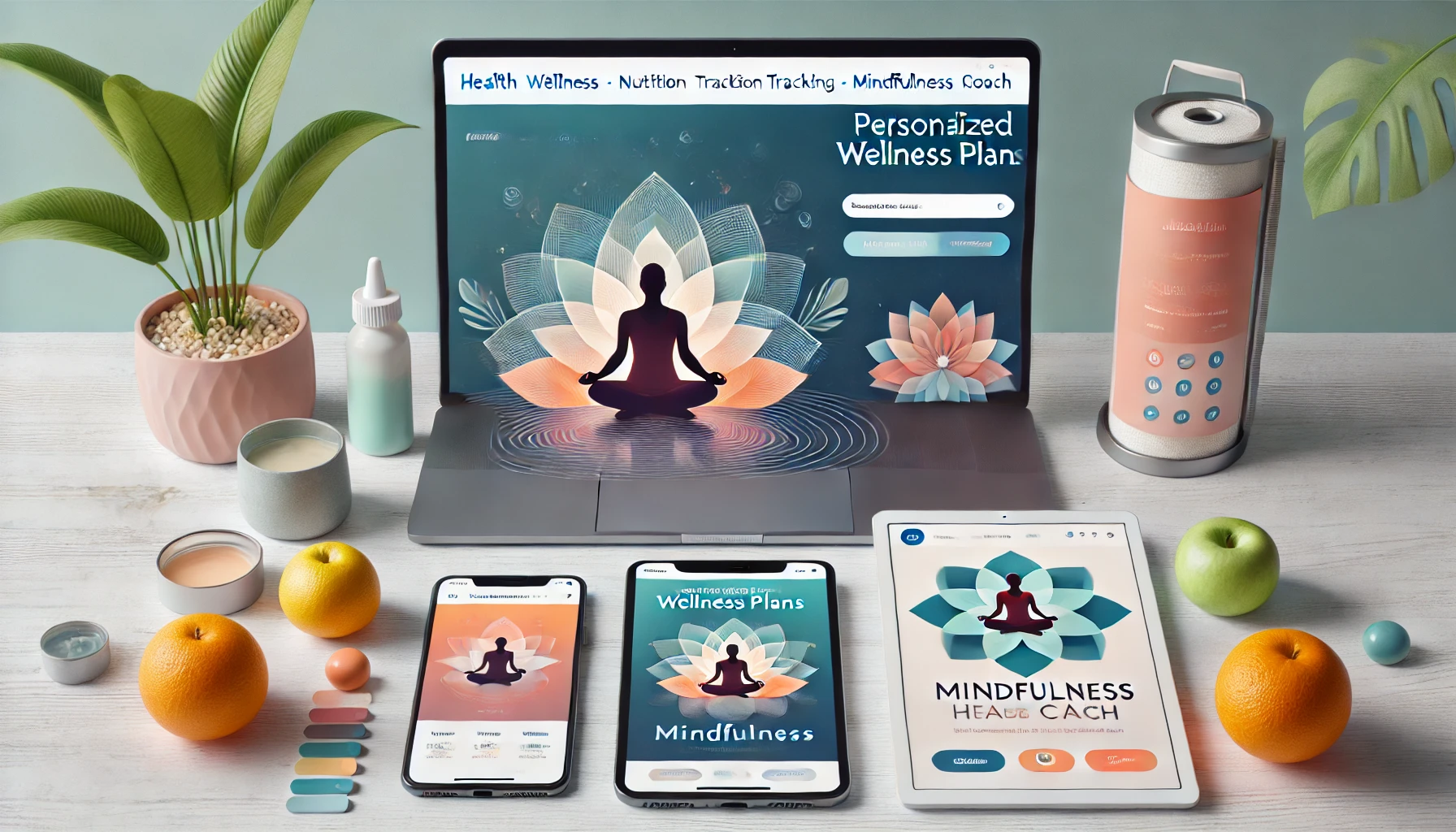Introduction
In today’s digital landscape, health and wellness websites are more than just online brochures; they are vital resources for individuals seeking reliable information, expert advice, and inspiration for healthier lifestyles. Whether you’re a health coach, a wellness blogger, or a fitness expert, your website plays a crucial role in establishing trust, educating your audience, and driving meaningful interactions. But what exactly makes a health and wellness website stand out? What are the key features that can engage visitors, establish authority, and ultimately drive conversions?
This guide explores the key features of health and wellness websites, focusing on what truly sets the best websites apart. By incorporating valuable resources like free holistic health courses online and holistic health blogs, you can create a website that not only attracts visitors but also builds long-term trust and credibility.

Informative Content for Visitors
Providing Valuable Resources to Engage Visitors
One of the most important features of any health and wellness website is its ability to offer valuable, practical resources that resonate with its audience. These resources should focus on topics that provide actionable insights and solutions to common health challenges.
For example, offering free holistic health courses online can be a game-changer. These courses can range from mindfulness meditation techniques to nutrition guides, creating a resource-rich environment that visitors can rely on. But it’s not just about the content itself; it’s about the user experience. A health website should offer content that is easy to find, well-organized, and accessible.
Imagine a visitor landing on your website looking for dietary advice. If you provide them with clear, structured content like an e-book, a downloadable guide, or a free mini-course on nutrition, you are offering value immediately. This not only helps build trust but also encourages engagement with your content and services. Over time, it can lead to increased brand loyalty and conversions.
By offering these types of free resources, you demonstrate expertise in your field while making it easier for potential customers to see the value you offer.
Case Studies, Blogs, and Educational Articles
A well-crafted blog or article section is an indispensable feature of any health and wellness website. Not only does it provide ongoing value to visitors, but it also positions your website as an authoritative source of information. Blogs, case studies, and educational articles provide the perfect space to:
- Discuss holistic health topics in depth
- Share success stories or case studies of individuals who have benefited from your services
- Explain medical or wellness concepts that people might struggle to understand
- Offer personal tips or advice based on your experience and expertise
Holistic health blogs are especially valuable in this space. Writing educational, engaging content about holistic health practices like herbal medicine, yoga, and sustainable living not only demonstrates your knowledge but also helps to connect with an audience that values a comprehensive approach to well-being.
Moreover, health and wellness website design should support this type of content through easy-to-navigate blog sections, intuitive search features, and visually appealing layouts. Blog posts should be organized by categories such as nutrition, fitness, mental health, and self-care, making it easy for visitors to find content that suits their interests.
SEO Best Practices for Discoverability
A critical aspect of running an effective health and wellness website is ensuring that your content is discoverable by search engines. By using the right SEO techniques, you ensure that your website ranks for relevant terms such as holistic health, natural wellness, or health and wellness coaching.
For example, when crafting content like educational articles or case studies, it’s important to research and use keywords strategically. Include keywords like holistic health blog, wellness tips, and health and wellness website design naturally within your content. A well-optimized website will not only rank better but will also appear as a trusted source for valuable health-related information.
Related Posts
- Fitness and Wellness Websites: Design and Content
- Importance of Good Website Design for Healthcare and Wellness
- Email Marketing for Healthcare Professionals
Additionally, implementing on-page SEO practices such as:
- Optimizing page titles, meta descriptions, and header tags
- Adding internal links to other related articles or resources
- Ensuring mobile responsiveness and fast load times
These features are essential in creating a website that ranks well and is considered authoritative and trustworthy by both search engines and visitors.
User-Centric Design with Mobile Optimization
In the age of smartphones and mobile browsing, your health and wellness website needs to be fully optimized for mobile devices. A responsive design ensures that all your content, resources, and services are easily accessible no matter what device your visitors are using.
An effective mobile design should include:
- Fast load times to keep visitors engaged
- Clear navigation for easy access to important sections like blogs, courses, and product listings
- Readable text with well-sized fonts that adjust for mobile screens
Not only does this enhance user experience, but it also boosts the trustworthiness of your website. If a visitor struggles to navigate your website or encounters loading delays, it could raise doubts about your credibility.

Building Trust through Consistency and Transparency
Clear Privacy Policies and Contact Information
Another critical feature for any health and wellness website is transparency. Visitors want to feel that their data is protected, especially when it comes to sensitive health information. Including a clear privacy policy and easily accessible contact details builds trust and shows that you take user data seriously.
Likewise, offering detailed information about your team, qualifications, and approach will establish authority and reinforce the notion that your site is a trusted resource.
Testimonials and Social Proof
While offering educational content is crucial, testimonials and social proof are powerful tools for building trust and authority. Health and wellness is a deeply personal journey for many people, and seeing real-life stories from others who have benefitted from your services or products can inspire confidence.
Consider featuring patient testimonials, client success stories, and user reviews prominently on your site. This not only humanizes your brand but also validates the effectiveness of your offerings.
Related Posts
- Alternative and Natural Health Websites
- Social Media Strategies for Holistic Health Websites
- Email Marketing for Healthcare Professionals
FAQs
What are the best features of a health and wellness website?
The best features include informative content like blogs and case studies, free resources such as courses, SEO optimization, and user-centric design with mobile responsiveness.
Why is a blog important for health and wellness websites?
Blogs allow you to share valuable educational content, engage with your audience, and establish authority in your field. They also improve SEO and drive traffic to your site.
How can I build trust on my health and wellness website?
Building trust involves providing high-quality, accurate content, showcasing testimonials and case studies, ensuring transparency with privacy policies, and offering valuable resources like free courses.
What should be included in the content of a wellness website?
A wellness website should include articles, blogs, case studies, educational resources, and services that focus on holistic health topics. The content should be informative, accessible, and actionable.
Key Takeaways
Creating a health and wellness website that attracts, informs, and retains visitors requires more than just a pretty design. Key features such as educational content, SEO best practices, and user-friendly design play a significant role in making a website both valuable and authoritative.
By focusing on informative content like holistic health blogs, offering resources such as free health courses, and ensuring a mobile-optimized design, you can provide an engaging and trustworthy experience for your audience.
With these features in place, your health and wellness website will not only attract more visitors but also foster long-term relationships and build credibility and trust in your industry.
- Effective health and wellness websites prioritize valuable content like free resources and blogs to educate and engage users.
- SEO and user-centric design are essential for improving discoverability and creating a seamless experience across devices.
- Trust and authority can be built through transparency, testimonials, and consistent, high-quality content.
